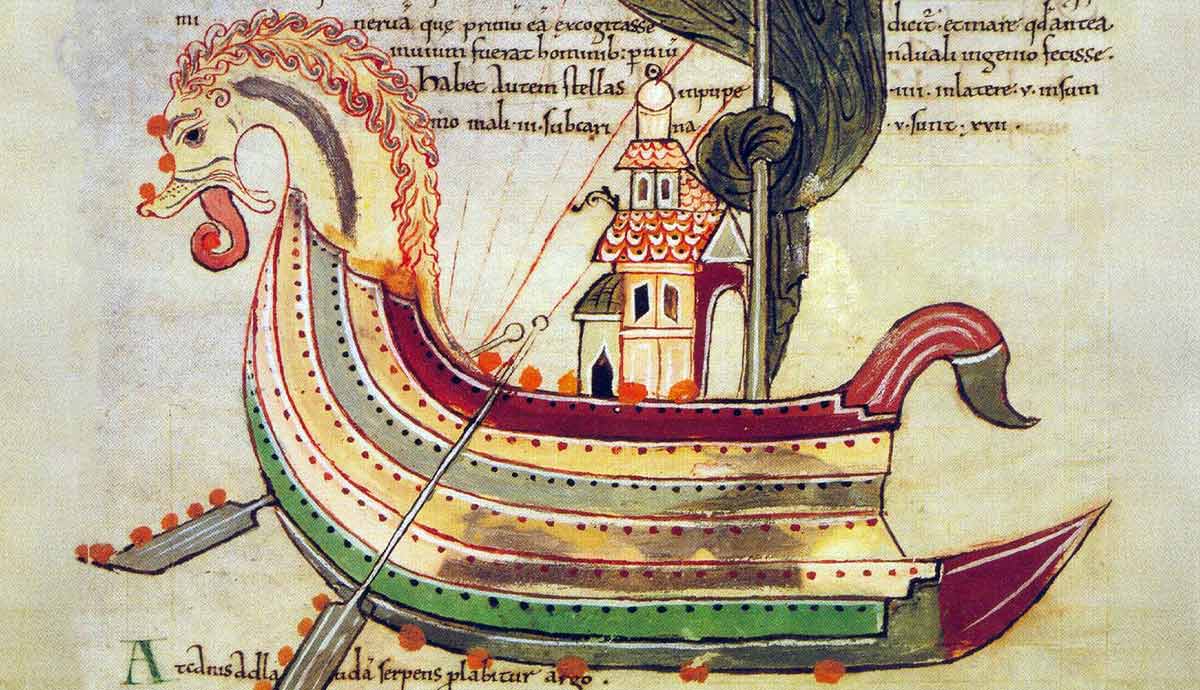6 Medieval Ships That Dominated Trade and War at Sea
Innovation is a process that works out differently by location. With that, different regions found solutions to problems particular to them. This meant that ship types evolved independently, primarily for trading, exploration, and conquest. Eventually, their uniqueness faded as their innovative designs spread far and wide, or newer designs became more prominent.The Longship: The Feared Viking Raider A Viking Longship. Source: WikimediaA Viking Longship. Source: WikimediaIn the early years of the medieval era, no sight caused more shock than Viking longships. Sighting one meant danger. For the Scandinavian Viking raiders, the longship became their chosen ride.First, the clinker-built hull, with its overlapping wooden planks, allowed for flexibility in rough seas.The longships oars and a single square sail provided speed and stealth. With a long, symmetrical bow and stern meant swift retreats without turning. And depending on its size, a longship could hold 100+ men, especially if out raiding.The durable longship voyaged from the British Isles to Byzantium, raiding and trading. Few places were considered out of reach if near a water body.The Knarr: When Vikings Went CommercialGerman Cog 12th-15th centuries. Source: Deutsches Historisches MuseumThe longship served the Vikings well as a raider and explorer. Yet by the 9th century, something bigger became necessary. Thus emerged the clinker-hulled knarr, shorter and broader. Relying on a single squared sail and four oars, the knarrs deeper hull meant more cargo, up to thirty tons.With a typical crew of twelve or fewer, knarrs carried livestock, timber, and supplies on open ocean voyages. This became the carryall for the rapid Norse expansion.The Cog: The Hanseatic StandardMedieval Hulk from Gdansk. Source: Central Maritime Museum of GdaskShipbuilders next developed the cog as the go-to design in medieval European waters. Clinker-built like the Norse boats, the cog had a single square sail. A typical cog ranged in size from eighty to seven meters in width and displaced several hundred tons. A few rare examples weighed up to 1,000 tons.The cog appeared in the 9th century and dominated Northern European trade, primarily with the powerful Hanseatic League. More advanced than the knarr, the cog introduced new features, such as a flush deck and high freeboard. These offered the crew and cargo better protection. A flat hull enabled better trading in harbors, cargo hauling, and even settling on the harbor bottoms for easier access. Cog builders built their boats with fore and aft castles for defense.The cogs heyday lasted from the 12th to the late 14th centuries. Better, more efficient designs began to emerge.The Hulk: The Mysterious CousinEnglish hulk ship. Source: Barb Drummond Curious HistorianThe mysterious hulk appeared in mystery around the 10th century. Yet despite centuries of use, little is known about the cogs main rival. Developed in the Low Countries, the hulk began as a towed barge in coastal waters or rivers. In appearance, hulks had pronounced stern and forecastles. Its reverse clinker build allowed for quicker construction and larger loads compared to clinker-hulled vessels.Propelled by a single sail, the hulks flat bottom and rounded hull emphasized capacity over speed. The hulk was like a freight train: reliable and big. Despite its utility, the hulk never supplanted the cog. Sadly, no complete example of a hulk exists; only records and a possible wreck remain. By the 14th century, newer designs came along as replacements.The Galley: The Mediterranean CourserFour dromonds (galleys). Source: Maritime Museum of MadridThe charging courser, or the galley, ruled the Mediterranean. Unlike the cog or carrack, banks of oars plus sails powered their low-profile hulls.Very maneuverable and quick, they ran circles around the slow wind-driven opponents. Often packed with marines, galleys could ram, board, and retreat, making them ideal for raids, defense, or war. Byzantine galleys, known as dromonds, frequently used the lethal Greek Fire in combat. This nearly unquenchable liquid fire often changed the course of a fight.A usual medieval galley was about 80-130 feet, 13-20 feet wide, with a six-foot draft or less. Besides crew, galleys carried marines for boarding/defense. By the late 1500s, the galley fell out of favor, its last major victory being the 1571 Battle of Lepanto.The Carrack: The Blue Water OptionThree-Masted Carrack at Sea. Source: National Gallery of ArtThe carrack represented the ultimate medieval ship development. Appearing in the late 15th century, this ship dominated Atlantic exploration. With lengths reaching up to 150 feet and up to four masts, the carrack possessed the legs for long-distance trading and exploring.The carracks secret lay in its construction and the combination of its sails. Unlike clinker-hull boats, builders laid their carvel-built hull planks edge to edge to create a more rigid surface. Carracks also used square and lateen sails together for windward sailing. Capable of transporting 1,000 tons, Spanish and Portuguese captains sailed carracks to Africa, the Americas, and Asia.


